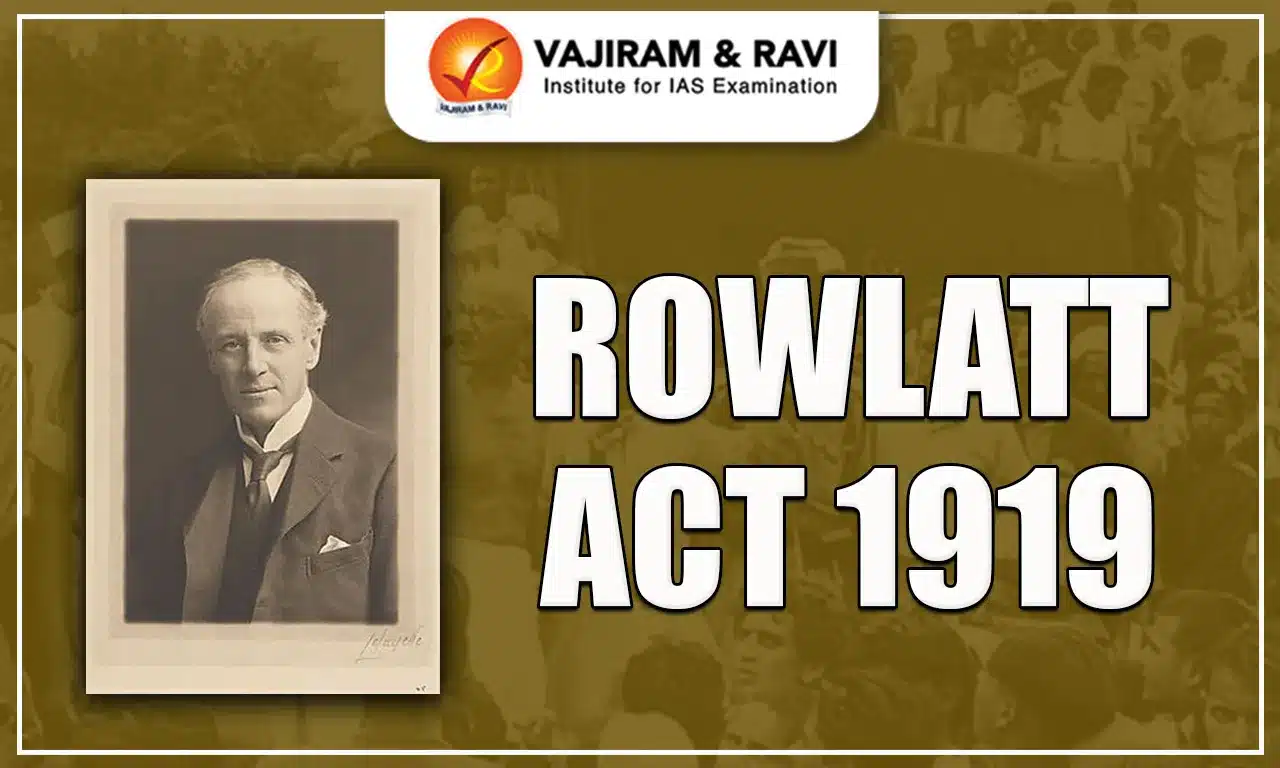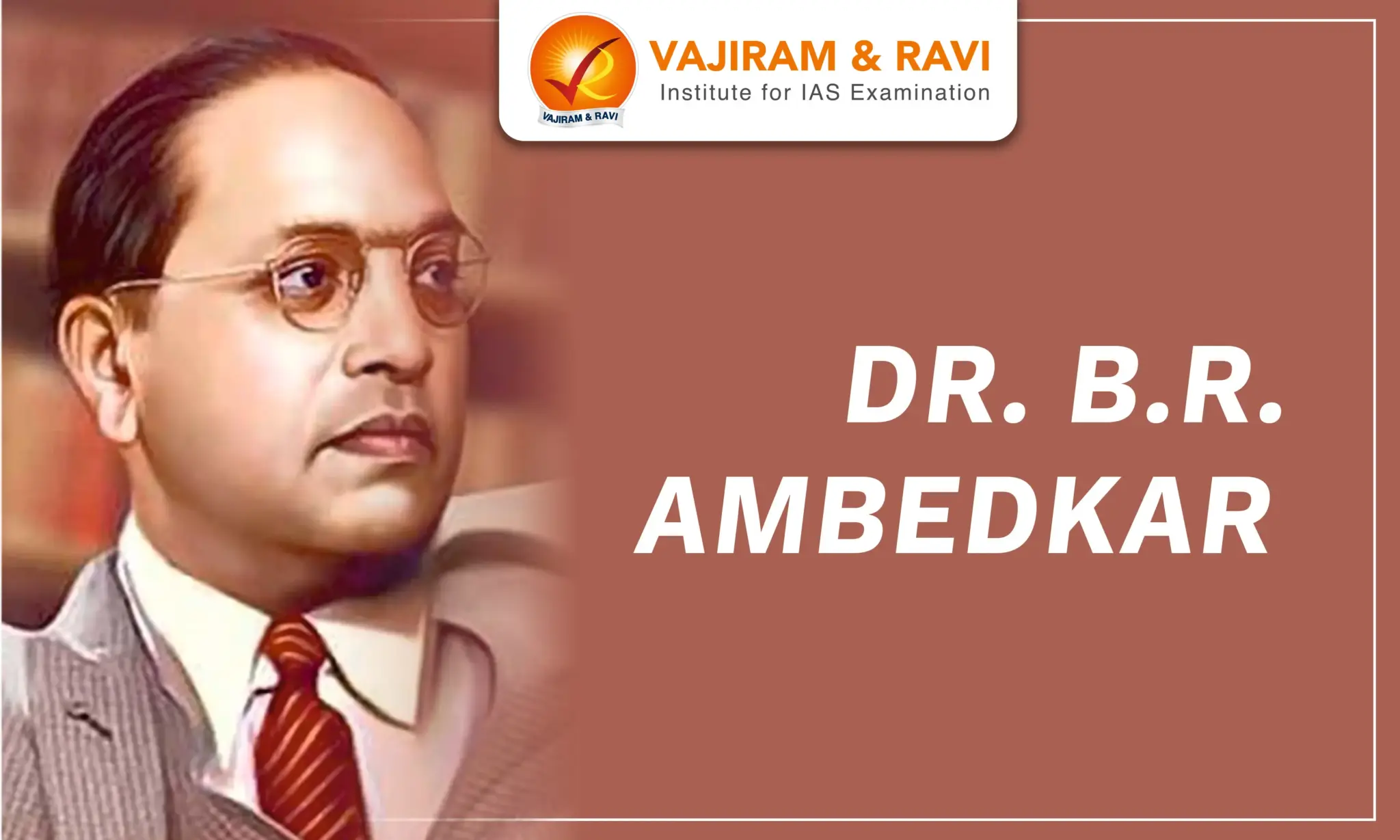The repressive Rowlatt Act (Anarchical and Revolutionary Crimes Act of 1919) shook the foundations of British imperialism and united millions of Indians across divisions of region, religion, caste and class. The Rowlatt Satyagraha of 1919 marked a major milestone in India's freedom struggle. It was the first large-scale organised application of Mahatma Gandhi's pioneering technique of non-violent civil disobedience on a national level against British repression.
However, brutal suppression of protests, especially the Jallianwala Bagh massacre, led to the Rowlatt satyagraha reaching its peak, marking a turning point in India's struggle for Independence.
Rowlatt Act Background
The seeds of the Rowlatt Act were sown in 1915 when the repressive Defense of India Act was imposed to curb anti-colonial activities during World War I.
- Sedition Committee: While the Defense of India Act was meant to be a temporary wartime measure, a committee (called Sedition Committee) headed by British judge Sydney Rowlatt recommended the continuation of such suppressive powers.
- It can be considered as an instrument of British Carrot (GOI Act,1919) and Stick (Rowlatt Act) policy.
- Based on the Rowlatt Committee's report, the Rowlatt Act was passed hurriedly in March 1919 amid vehement protests by Indian members of the Imperial Legislative Council.
- Betrayal of the promise: This curtailment of civil liberties was seen as a betrayal by the British, who had promised political reforms after the War in exchange for India's support and resources. Instead, they chose to further tighten their grip with the repressive new law. Indians from all walks of life were outraged, setting the stage for widespread agitations across the country.
Rowlatt Act 1919 Features
The British government was concerned about the threat of terrorism and revolutionary activity, and the Rowlatt Act was seen as a way to suppress these threats. The Rowlatt Act had a number of features that were widely criticized by Indians.
- The draconian Act suspended basic civil liberties.
- It enabled detention without trial for up to 2 years of purported political agitators.
- No appeal was allowed against such administrative detention.
- It authorised camera trials without juries for sedition cases, severely compromising judicial transparency and fairness.
- Tighter censorship, control of extremist publications and restrictions on public gatherings were introduced.
Start of the Rowlatt Satyagraha
Against this backdrop, Mahatma Gandhi gave a call to the nation to come together in disciplined protests against this unjust law. He urged Indians to peacefully show united opposition through Hartals, economic boycotts and non-cooperation. The first major public protest was organised on March 30, 1919, and came to be known as the Rowlatt Satyagraha.
Course of the Rowlatt Satyagraha
Gandhi undertook tours across the country to establish new Satyagraha Sabhas, mobilise support and spread awareness about Satyagraha based on non-violence. For the first time, Gandhi brought techniques of mass protest to build nationwide pressure against unjust British actions.
- Satyagraha sabha as an organisational step: Gandhi set up the first Satyagraha Sabha in Bombay, which was followed by the formation of Satyagraha committees in Delhi, Allahabad, Gujarat and other places.
- Gandhi did not yet have full organisational support (Indian National Congress or any political organisation), but the Home Rule Leagues and his own Satyagraha Sabhas and Committees provided the base.
- Supported by: Rajendra Prasad, J.B. Kripalani, Vallabhbhai Patel, Rajagopalachari, Jawaharlal Nehru, Hakim Ajmal Khan, Dr. M. A. Ansari, Dr. Saifuddin Kitchlu, Dr. Satyapal, Swami Shraddhananda, Hasan Imam, etc.
- The extent of participation: The call received an enthusiastic response beyond expectations, energising the people and awakening national consciousness.
- Work came to a standstill, shops closed down, transport was affected, and massive yet peaceful rallies were taken out in cities across India. Students boycotted schools and colleges.
- Gandhi's ability to unite diverse classes and communities towards a common cause was unparalleled.
- The protest strike saw unprecedented unity, with people across faiths participating in disciplined civil disobedience.
- Together, these nationwide strikes demonstrated the collective antipathy towards repressive policies, forcing the administration to take note.
- Himalayan Blunder:
- There were some instances of violence. One of the violent events made the pretext of the Jallianwala Bagh Massacre.
- Saddened by the Massacre and the changing nature of the movement as violent, Gandhi called off the Rowlatt satyagraha, stating it as a “Himalayan Blunder”. He said that, first, he had to teach the methods of satyagraha to the Indian masses.
Jallianwala Bagh Massacre
As part of Mahatma Gandhi's Rowlatt satyagraha, peaceful anti-Rowlatt meetings were held in Amritsar too. Following are the events leading to this inhumane event:
- On April 9, 1919, the Lieutenant Governor of Punjab, Sir Michael O'Dwyer, ordered the arrest of local leaders Dr. Saifuddin Kitchlew and Dr. Satyapal in Amritsar. This sparked protests.
- On April 10, demonstrations were held in Amritsar, demanding the release of the two leaders. Troops fired on the peaceful protesters, killing many and inflaming public outrage.
- On April 13 (Baisakhi festival), over 15,000 people gathered at Jallianwala Bagh in Amritsar for a public meeting. Most were local residents and pilgrims visiting the Golden Temple.
- Brigadier General Reginald Dyer arrived with troops, blocked exit points and ordered indiscriminate firing on the gathering without any warning. The firing continued for 10 minutes, resulting in over 1,000 deaths and 1,500 wounded.
- Two days after the massacre, Martial Law was clamped down on five districts - Lahore, Amritsar, Gujranwala, Gujarat and Lyallpore.
- The declaration of Martial Law was to empower the Viceroy to direct immediate trial by court-martial of any person involved in the revolutionary activities. As the news of the massacre spread across the nation, Tagore renounced his Knighthood.
Hunter Commission
On October 14, 1919, the Hunter Commission(The Disorders Inquiry Committee) was set up to investigate the Jallianwala Bagh massacre. Dyer defended his excessive actions, claiming that it was necessary to punish defiance and violence.
- Decision:
- The Hunter report criticised Brig. General Dyer's actions as unjustified.
- He was forced to resign, but no serious penalties were imposed on him and other perpetrators.
This tragedy became a turning point in India's freedom struggle, revealing the brutal and oppressive nature of British rule. It energised the resolve for independence across communities. On March 13 1940, at Caxton Hall in London, Udham Singh, an Indian freedom fighter, killed Michael O'Dwyer, who had approved Dyer's action and was believed to have been the main planner.
Rowlatt Satyagraha Impact and Significance
Some key impacts of the nationwide agitation against the Rowlatt Act were:
- Repeal of the Rowlatt Act:
- By 1920, in the face of unrelenting protests, the British were compelled to repeal the Rowlatt Act.
- While considered belated by many, this partial capitulation to people's demands was seen as a victory for civil liberties. It also emboldened Indians to continue the freedom struggle.
- Elevation of Gandhi as a mass leader:
- The Rowlatt Satyagraha established Gandhi's leadership. His ability to cut across barriers of religion, class, caste and region and unite millions of Indians in a common cause was unparalleled.
- Gandhi showed the power of nonviolent civil disobedience in challenging unjust laws.
- He earned the goodwill of Muslims by supporting the Muslim cause of discontent regarding the British treatment of Turkey, which also paved the way for him to eventually become the leader of the converged NCM-Khilafat Movement.
- Changed nature of freedom struggle:
- The nationalists realised that constitutional means alone would not persuade the British to relinquish power.
- The Rowlatt Strike shifted the struggle towards mass agitations and non-cooperation as viable strategies to put pressure on the colonial authorities.
- It paved the way for Gandhi's Non-Cooperation Movement in 1920.
- Exposed British repression:
- The brutal suppression of peaceful protests, especially the Jallianwala Bagh massacre, completely exposed the authoritarian nature of British rule.
- It united Indians in their opposition to such excessive use of force and became a turning point in changing perceptions about British rule.
- International Attention:
- The foreign press widely reported the repressive British response and the disciplined nationwide strike by Indians.
- It evoked sympathy and support from liberal groups abroad while also damaging Britain's international credibility.
The nationwide upsurge against the draconian Rowlatt Act marked a political watershed. Despite violent suppression, it succeeded in consolidating Indian public opinion and boosting the struggle for self-rule under Gandhi's leadership. The event highlighted the moral courage of satyagraha as well as the urgency of dismantling unjust colonial governance and empowering Indian voices. The Rowlatt Satyagraha's reverberations laid the foundations for gaining swaraj.
Last updated on November, 2025
→ Check out the latest UPSC Syllabus 2026 here.
→ Join Vajiram & Ravi’s Interview Guidance Programme for expert help to crack your final UPSC stage.
→ UPSC Mains Result 2025 is now out.
→ UPSC Notification 2026 is scheduled to be released on January 14, 2026.
→ UPSC Calendar 2026 is released on 15th May, 2025.
→ The UPSC Vacancy 2025 were released 1129, out of which 979 were for UPSC CSE and remaining 150 are for UPSC IFoS.
→ UPSC Prelims 2026 will be conducted on 24th May, 2026 & UPSC Mains 2026 will be conducted on 21st August 2026.
→ The UPSC Selection Process is of 3 stages-Prelims, Mains and Interview.
→ UPSC Result 2024 is released with latest UPSC Marksheet 2024. Check Now!
→ UPSC Prelims Result 2025 is out now for the CSE held on 25 May 2025.
→ UPSC Toppers List 2024 is released now. Shakti Dubey is UPSC AIR 1 2024 Topper.
→ UPSC Prelims Question Paper 2025 and Unofficial Prelims Answer Key 2025 are available now.
→ UPSC Mains Question Paper 2025 is out for Essay, GS 1, 2, 3 & GS 4.
→ UPSC Mains Indian Language Question Paper 2025 is now out.
→ UPSC Mains Optional Question Paper 2025 is now out.
→ Also check Best IAS Coaching in Delhi
Rowlatt Act FAQs
Q1. What was the Rowlatt Act against which the protests happened?+
Q2. Who led the nationwide satyagraha against the Rowlatt Act?+
Q3. What form did the Rowlatt Satyagraha take?+
Q4. Where did the major violence happen during the agitation?+
Q5. What impact did the Rowlatt satyagraha have on India's freedom struggle?+
Tags: quest rowlatt act 1919

















